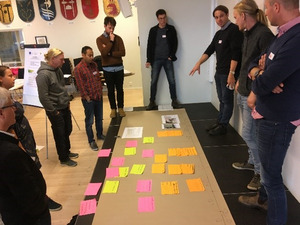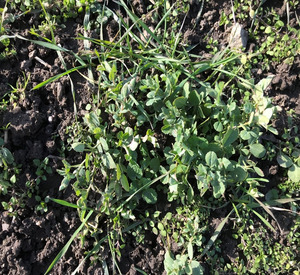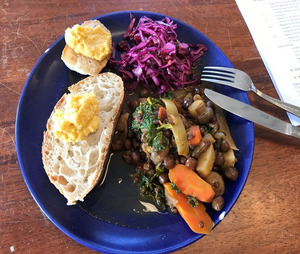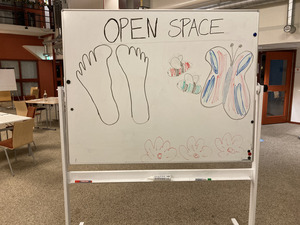Case study 19: Sweden: Local legumes – collaboration within the whole value chain
Cluster 4: Diversification through intercropping, with a special focus on grain legumes
Growing grain legumes in the cropping systems can provide several agronomic and environmental benefits. In addition, locally produced grain legumes have the potential to increase farmer’s income (premium price), develop new businesses and reduce the import of grain legumes transported over long distances for human consumption in Sweden. Despite this, grain legumes, except for yellow pea and brown beans, are not commonly grown for human consumption, and a lot of the legumes and legume products sold in food stores in Sweden are imported. The objective is therefore to engage and strengthen the links between various stakeholders (farmers, value chain actors, advisors, researchers, NGOs, consumer’s organisations, etc.) in a participatory process to find ways to increase the production and consumption of Swedish-produced grain legumes in Sweden.




What were the main problems underlying the emergence of the case study?
Incorporating grain legumes in the current cropping system in both time and space will lead to more diversified systems, which have the potential to provide agronomic, economic, environmental and (consumers’) health benefits. Despite these benefits, the current agricultural systems in Sweden are heavily based on cereal sole cropping and external inputs.
How was the problem addressed and which actors were involved?
During the first three years, the case study team was composed of about 15 dedicated and well-motivated actors who want to promote locally produced grain legumes, mainly for human consumption. Through a series of workshops and other forms of interaction (telephone and personal face-to-face meetings) during 2018-2020, these participants have identified the barriers and opportunities, formulated the vision and mission of the case study, devised action plans and engaged actively in adopting and spreading the objectives of the case study.
The original case study team was comprised of advisors, farmers, researchers (from three institutes), two grain legume trading companies (Nordisk Råvara and Kalmar Ölands Trädgårdsprodukter), a local food co-operative shop (Matkooperativet Helsingborg), a non-profit environmental organisation (The Swedish Society for Nature Conservation) and a food consultant. The case study team gradually included additional actors during the first three years. However, towards the end of 2019, we accelerated in recruiting more engaged persons, in order to create a snowball movement working for the same vision.
Solution investigated
There is a mutual interest among the various actors for collaboration and establishing stronger links. Establishing links among the case study actors will be important for legume businesses to develop, to communicate the research and development results, and to motivate and create awareness among consumers and policy makers.
Expected outcome
Our vision is that in 10 years (i.e., by 2028), in most meals, consumed at home or outside, people enjoy flavors of locally-produced grain legumes.
This will be achieved through a strong link between various stakeholders (academia, value chain actors, consumers and environmental organizations, culinary experts, public media and policy makers) working towards a rapid increase in the production and consumption of Swedish-produced grain legumes.
Relevance to the DiverIMPACTS goals
The case study involves various stakeholders (in the value chain and in society) to promote grain legume production in Swedish agricultural system, which is dominated by sole cropping of cereals. It will lead to the contribution of several environmental services and benefits, develop local food systems and strengthen the links between various societal actors.
Case study legacy
During 2021, we increased the number of network members. We did that according to a participatory decision process where we also discussed the fragile balance between cooperation and competition between some new partners. The network is limited to people who are seriously engaged in achieving the vision. We now have about 55 members on a distribution list and the intention is that the network will continue to grow. We will continue until at least 2024. Thanks to local funding in 2022-2024, the network will have a minimum of two meetings a year and two information letters will be distributed to the participants every year. We also have some fundings for a few demonstration activities. However, most activities within the enlarged network will rely on the initiative of the individual participants or organisations in the network. New ideas are constantly coming up and are being realized.
Further information
Links
Swedish webpage for the DiverIMPACTS network Lokala Baljväxter (LoBa) network and a Facebook group
- hushallningssallskapet.se: Swedish webpage - Hushållnings sällskapet
- facebook.com: Facebook group
The case study has developed a new communication tool of interest when starting up multi actor networks. More information about the tool here:
Case study team
- Anita Gunnarsson, Hushållningssällskapet Skåne, case study leader
- Raj Chongtham, SLU, case study monitor
From 2022 onwards, DiverIMPACTS ends, the coordinator for the enlarged network is Annika Jönsson, Hushållningssällskapet Skån
 tap and then scroll down to the Add to Home Screen command.
tap and then scroll down to the Add to Home Screen command.